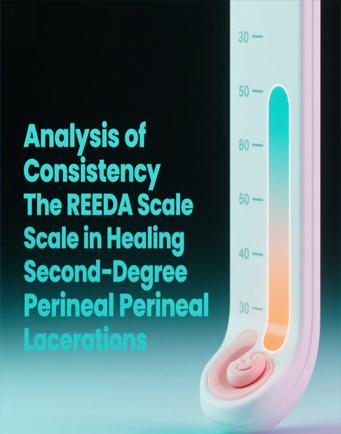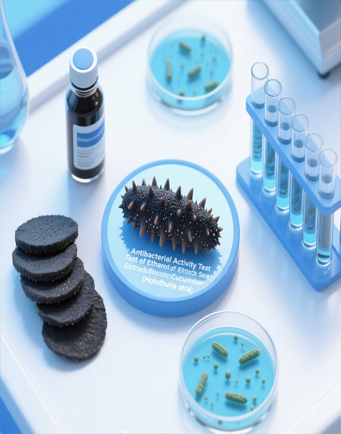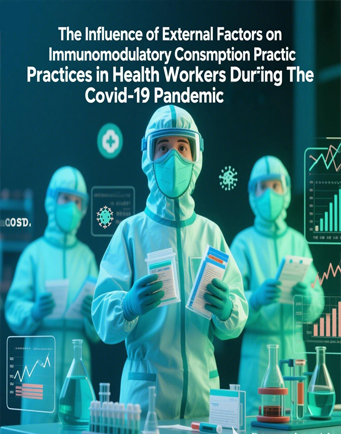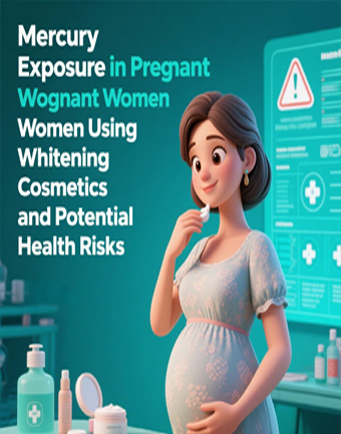Energy Intake, Protein Intake, and Toddler Hygiene with the Incidence of Stunting in 24-59 Months Toddlers in Mentawai Islands

Downloads
Toddlerhood is an important period in human growth and development; during that period, if the nutrition is not adequate, they risk stunting. Some factors that cause this are energy intake, protein intake, parenting, and food security. In 2022, the prevalence of stunting is around 148 million (22.3%), most coming from Asia and Africa; according to WHO, in Indonesia, the prevalence of stunting is 21.6%. The incidence of stunting in Mentawai Islands Regency is 32%, the second highest rate below the national rate. According to the author's knowledge, this research is the first study to analyze the relationship between independent and dependent variables as well as the determinants of stunting in toddlers in the Sarereiket Health Centre using questionnaire data, direct observation, and interviews that have gone through a validation and reliability process from experts through the laboratory. The research aims to analyze the relationship between energy intake, protein intake, and hygiene of toddlers and the incidence of stunting in toddlers aged 24-59 months in South Siberut District, Mentawai Islands Regency. The method used the observational method. The subjects of analysis were 393 toddlers aged 24-59 months in the Sarereiket Health Centre who were involved in this study. Multivariate regression was performed to identify the relationship between dependent and independent variables. The results indicate that toddlers' energy intake, protein intake, and hygiene are associated with stunting. The results of the multivariate analysis in this study indicate that protein intake and toddler hygiene influence stunting and contribute to increasing the incidence of stunting in toddlers. The conclusion is there is a significant relationship between energy intake, protein intake, and hygiene of toddlers and the incidence of stunting in the Sarereiket Community Health Centre, Mentawai Islands.
Adani, F. Y., & Nindya, T. S. (2017). Perbedaan Asupan Energi, Protein, Zink, dan Perkembangan pada Balita Stunting dan non Stunting. Amerta Nutrition, 1(2), 46–51. https://doi.org/10.20473/amnt.v1i2.6225
Ahmed, M. H., Vasas, D., Hassan, A., & Molnár, J. (2022). The impact of functional food in prevention of malnutrition. PharmaNutrition, 19, 100288. https://doi.org/10.1016/j.phanu.2022.100288
Aisyah, I. S., & Yunianto, A. E. (2021). Hubungan Asupan Energi dan Asupan Protein dengan Kejadian Stunting pada Balita (24-59 Bulan) Di Kelurahan Karanganyar Kecamatan Kawalu Kota Tasikmalaya. Jurnal Kesehatan Komunitas Indonesia, 17(1), 240–246. https://doi.org/10.37058/jkki.v17i1.3603
Anggraeni, R., Aljaberi, M. A. A., Nisha Nambiar, N., Sansuwito, T. B., & Wati, N. L. (2022). The Relationship of Supplementary Feeding, Breast Milk (MP-ASI) to Infants with The Event of Diarrhea. International Journal of Nursing Information, 1(1), 1–9. https://doi.org/10.58418/ijni.v1i1.9
Aritonang, T. R., Wa Ode Ida Fitriani, Riyen Sari Manulang, & Farida Mentalina Simanjuntak. (2021). Relationship of MP ASI Processing with Infant 6 to 12 Months Old Baby Growth and Development (Study at Umi Rahma Maternity Clinic in 2019). Science Midwifery, 9(2), 377-382. Retrieved from: https://midwifery.iocspublisher.org/index.php/midwifery/article/view/116
Das, S., Fahim, S. M., Alam, M. A., Mahfuz, M., Bessong, P., Mduma, E., Kosek, M., Shrestha, S. K., & Ahmed, T. (2021). Not water, sanitation and hygiene practice, but timing of stunting is associated with recovery from stunting at 24 months: results from a multi-country birth cohort study. Public Health Nutrition, 24(6), 1428–1437. https://doi.org/10.1017/S136898002000004X
Djuardi, Y., Lazarus, G., Stefanie, D., Fahmida, U., Ariawan, I., & Supali, T. (2021). Soil-transmitted helminth infection, anemia, and malnutrition among preschool-age children in nangapanda subdistrict, indonesia. PLoS Neglected Tropical Diseases, 15(6), 1–16. https://doi.org/10.1371/journal.pntd.0009506
Emerson, L. E., Anantharam, P., Yehuala, F. M., Bilcha, K. D., Tesfaye, A. B., & Fairley, J. K. (2020). Poor wash (Water, sanitation, and hygiene) conditions are associated with leprosy in North Gondar, Ethiopia. International Journal of Environmental Research and Public Health, 17(17), 1–10. https://doi.org/10.3390/ijerph17176061
Endrinikapoulos, A., Afifah, D. N., Mexitalia, M., Andoyo, R., Hatimah, I., & Nuryanto, N. (2023). Study of the importance of protein needs for catch-up growth in Indonesian stunted children: a narrative review. SAGE Open Medicine, 11. https://doi.org/10.1177/20503121231165562
Fikawati, S., Moh Anshori, L., & Sutrisna, B. (2020). Relationship Energy and Protein Intake with the Incidence of Stunting among Toddler Aged (25-60 Months) in Mangkung Village, District of Central Lombok. Indian Journal of Public Health Research & Development, 11(03), 1593-1598. https://doi.org/10.37506/ijphrd.v11i3.1858
Fikawati, S., Syafiq, A., Ririyanti, R. K., & Gemily, S. C. (2021). Energy and protein intakes are associated with stunting among preschool children in Central Jakarta, Indonesia: a case-control study. Malaysian Journal of Nutrition, 27(1), 81–91. https://doi.org/10.31246/MJN-2020-0074
Fitriani, I., & Oktobriariani, R. R. (2017). Stimulasi, Deteksi dan Intervensi Dini Orang Tua terhadap Pencegahan Penyimpangan Pertumbuhan dan Perkembangan Anak Balita. Indonesian Journal for Health Sciences, 1(1), 1. https://doi.org/10.24269/ijhs.v1i1.383
Hadi, A. J., Riman, E. Y., Sudarman, S., Manggabarani, S., Ahmad, H., Ritonga, N., Antoni, A., Ishak, S., Rate, S., Simamora, F. A., Hidayah, A., Napitupulu, M., & Sani, H. A. (2022). Socio-Family Culture Against Stunting Risk: A Cross-Sectional Population-Based Study. Natural Volatiles & Essential Oils Journal, 9(1), 1301–1311.
Komang, I. Y., Ashar, K., & Syafitri, W. (2023). The Effect of Food Ingredients Containing Protein on Stunting Cases in East Java. Journal of International Conference Proceedings, 6(1), 368–375. https://doi.org/10.32535/jicp.v6i1.2312
Krisnana, I., Pratiwi, I. N., & Cahyadi, A. (2020). The relationship between socio-economic factors and parenting styles with the incidence of stunting in children. Systematic Reviews in Pharmacy, 11(5), 738–743. https://doi.org/10.31838/srp.2020.5.106
Kwami, C. S., Godfrey, S., Gavilan, H., Lakhanpaul, M., & Parikh, P. (2019). Water, sanitation, and hygiene: Linkages with stunting in rural Ethiopia. International Journal of Environmental Research and Public Health, 16(20), 3793. https://doi.org/10.3390/ijerph16203793
Manalu, S. M. H., Syaputri, D., Bambang S, Th. T., Tanjung, N., Tanjung, R., & Damanik, A. P. (2023). The Effect of Clean Water Facilities and Household Food Sanitation Hygiene on Stunting in Toddlers. Contagion: Scientific Periodical Journal of Public Health and Coastal Health, 5(3), 969. https://doi.org/10.30829/contagion.v5i3.17239
Mock, C. N., Nugent, R., Kobusingye, O., & Smith, K. R. (2017). Injury prevention and environmental health. World Bank Group. https://doi.org/10.1596/978-1-4648-0522-6
Morales, F., Montserrat-de la Paz, S., Leon, M. J., & Rivero-Pino, F. (2024). Effects of Malnutrition on the Immune System and Infection and the Role of Nutritional Strategies Regarding Improvements in Children’s Health Status: A Literature Review. Nutrients, 16(1), 1. https://doi.org/10.3390/nu16010001
Nuzhat, S., Shahunja, K. M., Shahid, A. S. M. S. B., Khan, S. H., Islam, S. Bin, Islam, Md. R., Ahmed, T., Chisti, M. J., Hossain, M. I., & Faruque, A. S. G. (2020). Diarrhoeal children with concurrent severe wasting and stunting compared to severe wasting or severe stunting. Tropical Medicine & International Health, 25(8), 928–935. https://doi.org/https://doi.org/10.1111/tmi.13446
Pitoyo, A. J., Saputri, A., Agustina, R. E., & Handayani, T. (2022). Analysis of Determinan of Stunting Prevalence among Stunted Toddlers in Indonesia. Populasi, 30(1), 36. https://doi.org/10.22146/jp.75796
Raiten, D. J., & Bremer, A. A. (2020a). Exploring the nutritional ecology of stunting: New approaches to an old problem. Nutrients, 12(2), 371. https://doi.org/10.3390/nu12020371
Sari, M. P., Nathasaria, T., Majawati, E. S., & Pangaribuan, H. U. (2020). Soil-Transmitted Helminth Infections, Anemia, and Undernutrition Among School-Children in An Elementary School in North Jakarta, Indonesia. Majalah Kedokteran Bandung, 52(4), 205–212. https://doi.org/10.15395/mkb.v52n4.2137
Silva, J. M., Vieira, L. L., Abreu, A. M., de Souza Fernandes, E., Moreira, T. R., da Costa, G. D., & Cotta, R. M. (2023). Water, sanitation, and hygiene vulnerability in child stunting in developing countries: a systematic review with meta-analysis. Public Health, 219, 117-123. https://doi.org/10.1016/j.puhe.2023.03.024
Simamora, V., Santoso, S., & Setiyawati, N. (2019). Stunting and development of behavior. International Journal of Public Health Science, 8(4), 427–431. https://doi.org/10.11591/ijphs.v8i4.20363
Tyas, D., Sa'danoer, I., & Silvia, E. (2024). The Relationship between Family Attitudes and Complementary Feeding (MP-ASI) for Infants at Lubuk Alung Health Center in 2023. Journal of Midwifery and Nursing, 6(1), 372-378. Retrieved from: https://iocscience.org/ejournal/index.php/JMN/article/view/4735
UNICEF/WHO/World Bank Group. (2022). Levels and trends in child malnutrition. UNICEF/WHO/World Bank Group. Retrieved from: https://iris.who.int/bitstream/handle/10665/368038/9789240073791-eng.pdf?sequence=1
Wang, Y., Jiang, H., Yu, L., Gao, Z., Liu, W., Mei, Q., & Gu, Y. (2023). Understanding the Role of Children's Footwear on Children's Feet and Gait Development: A Systematic Scoping Review. Healthcare (Basel, Switzerland), 11(10), 1418. https://doi.org/10.3390/healthcare11101418
Xiong, T., Wu, Y., Hu, J., Xu, S., Li, Y., Kong, B., Zhang, Z., Chen, L., Tang, Y., Yao, P., Xiong, J., & Li, Y. (2023). Associations between High Protein Intake, Linear Growth, and Stunting in Children and Adolescents: A Cross-Sectional Study. Nutrients, 15(22), 1–15. https://doi.org/10.3390/nu15224821
Copyright (c) 2024 JURNAL INFO KESEHATAN

This work is licensed under a Creative Commons Attribution-NonCommercial-ShareAlike 4.0 International License.
Copyright notice
Ownership of copyright
The copyright in this website and the material on this website (including without limitation the text, computer code, artwork, photographs, images, music, audio material, video material and audio-visual material on this website) is owned by JURNAL INFO KESEHATAN and its licensors.
Copyright license
JURNAL INFO KESEHATAN grants to you a worldwide non-exclusive royalty-free revocable license to:
- view this website and the material on this website on a computer or mobile device via a web browser;
- copy and store this website and the material on this website in your web browser cache memory; and
- print pages from this website for your use.
- All articles published by JURNAL INFO KESEHATAN are licensed under the Creative Commons Attribution 4.0 International License. This permits anyone to copy, redistribute, remix, transmit and adapt the work provided the original work and source is appropriately cited.
JURNAL INFO KESEHATAN does not grant you any other rights in relation to this website or the material on this website. In other words, all other rights are reserved.
For the avoidance of doubt, you must not adapt, edit, change, transform, publish, republish, distribute, redistribute, broadcast, rebroadcast or show or play in public this website or the material on this website (in any form or media) without appropriately and conspicuously citing the original work and source or JURNAL INFO KESEHATAN prior written permission.
Permissions
You may request permission to use the copyright materials on this website by writing to jurnalinfokesehatan@gmail.com.
Enforcement of copyright
JURNAL INFO KESEHATAN takes the protection of its copyright very seriously.
If JURNAL INFO KESEHATAN discovers that you have used its copyright materials in contravention of the license above, JURNAL INFO KESEHATAN may bring legal proceedings against you seeking monetary damages and an injunction to stop you using those materials. You could also be ordered to pay legal costs.
If you become aware of any use of JURNAL INFO KESEHATAN copyright materials that contravenes or may contravene the license above, please report this by email to jurnalinfokesehatan@gmail.com
Infringing material
If you become aware of any material on the website that you believe infringes your or any other person's copyright, please report this by email to jurnalinfokesehatan@gmail.com.





































